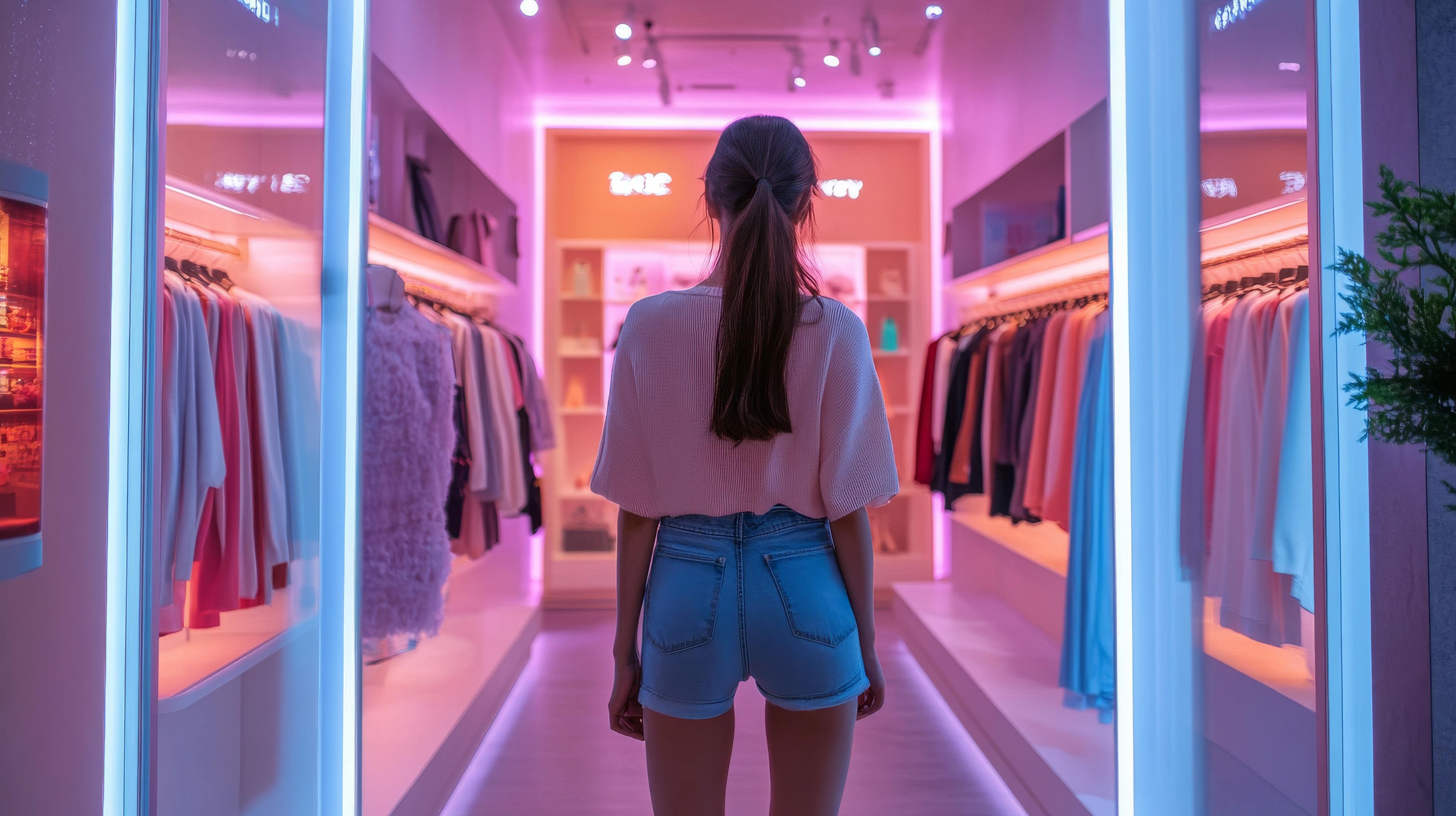
The Future of Virtual Try-On: A Growth Driver for Fashion E-Commerce in 2025
Virtual Try-On (VTO) technologies are revolutionizing the fashion e-commerce industry. After two decades of development, these tools have finally reached a point where they significantly enhance the online shopping experience. Major players like Google are leading this revolution with advanced AI-powered solutions, enabling consumers to virtually try on clothing. This innovation helps brands boost customer engagement, increase conversions, and reduce returns.
Virtual Try-On: A Core Solution for the Online Shopping Experience
In 2025, while e-commerce continues to grow, it still represents a smaller share of global retail sales compared to in-store purchases. This gap persists partly because physical stores offer a tactile experience - customers can try on clothes, feel fabrics, and get immediate feedback. Online shopping often lacks this crucial aspect, making the process feel incomplete, especially in fashion.
Why Virtual Try-On is Essential
The two primary reasons for online returns are incorrect fit (50%) and items not meeting expectations (42%). VTO technology addresses these issues by allowing customers to visualize clothing on diverse models or avatars. This not only improves customer satisfaction but also lowers costly return rates for brands.
Google's Virtual Try-On Technology : Innovation with Room for Improvement
Google's Virtual Try-On Technology has advanced significantly, allowing shoppers to visualize clothing on models with diverse body types through highly realistic, AI-generated images. However, while the technology offers exciting possibilities, questions remain about its accuracy and reliability in representing garments as intended. As highlighted by Veesual, the ultimate goal of these innovations is to build trust with shoppers, yet even minor discrepancies can impact that trust. The challenge lies in balancing technological advancements with the need for precision and authenticity in the customer experience.
20 years of Virtual Try-On Experiments : Lessons learned
1. Keep Implementations User-Friendly
Many early VTO solutions failed because they demanded too much effort from users, such as full-body photo uploads or complex measurements. This created friction in the shopping experience, discouraging consumers from using the tool.
The key is to make the process simple. Google's VTO is designed to be intuitive—users can click on a product with the "try-on" badge, select a model, and immediately see the clothes in action. This ease of use encourages more people to engage with the feature.
2. Ensure Realistic Visual Outputs
A common complaint about older VTO systems was that the results looked unrealistic. Superimposing clothing on user-uploaded photos often produced distorted or low-quality images due to differences in lighting and angles. This led to disappointment when the product arrived and didn't meet expectations.
Controlling the inputs is essential for accurate outputs. Google's solution ensures that both models and clothing are photographed in consistent, high-quality conditions, creating realistic representations that give shoppers a better idea of how garments will look in real life.
3. Use 2D Instead of 3D for Scalability
While 3D solutions offer incredible realism, they are often expensive and difficult to scale. They require advanced technology and faster internet speeds, which not all consumers have. Google's approach focuses on using 2D images with AI-driven adjustments, providing a more scalable, accessible solution for both brands and consumers.
2D technology with high-quality rendering can deliver a more accessible and cost-effective virtual try-on experience while still providing impressive realism.
How Fashion Brands Can Leverage Virtual Try-On in 2025
1. Represent Customer Diversity
Virtual Try-On allows brands to offer a diverse range of models representing different body shapes, sizes, and skin tones. By offering models that more accurately reflect their customer base's diversity, brands can create a more inclusive shopping experience, encouraging customers to feel more confident in their purchases.
2. Reduce Returns with More Accurate Visualizations
As returns continue to be a major cost for online retailers, improving VTO accuracy can play a key role in reducing them. By ensuring shoppers have a clear and realistic idea of how a garment will look on them, brands can minimize size-related returns and increase customer satisfaction.
3. Offer a Simple, Engaging Experience
The most successful VTO implementations offer a seamless, user-friendly experience. By using intuitive interfaces, realistic models, and high-quality imagery, brands can make virtual try-on an enjoyable part of the online shopping journey, building trust and increasing sales.
Conclusion : Virtual Try-On as a Growth Driver in 2025
Virtual Try-On technology has evolved from a novelty to a critical tool in fashion e-commerce. With major advancements like Google's AI-powered solution, brands can now offer more realistic, inclusive, and engaging shopping experiences that boost conversions and reduce returns. As we move into 2025, brands that embrace VTO will be better positioned to meet customer expectations and drive growth in the increasingly competitive online retail market.
To learn how Veesual can help you implement these technologies effectively, contact us today.
